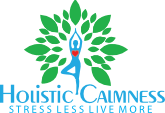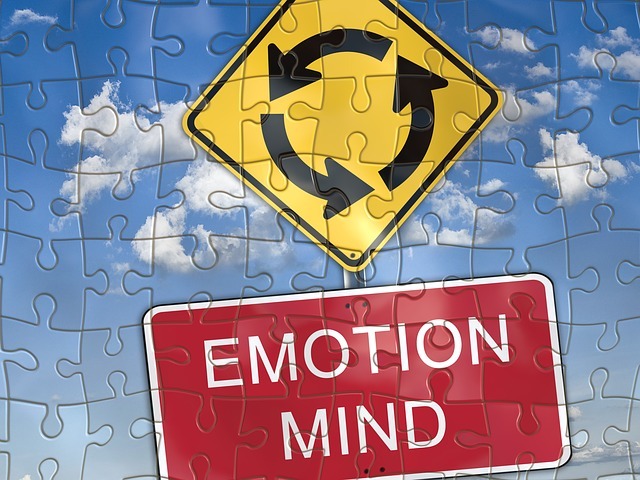Use of Biofeedback as an Effective Stress Management
The WHO (World Health Organization) has declared stress the health epidemic of the 21st Century.
Indeed, according to the American Psychological Association, as much as 75% of American adults have reported experiencing varying levels of stress at some point.
[tcb-script async=”” src=”//pagead2.googlesyndication.com/pagead/js/adsbygoogle.js”][/tcb-script][tcb-script](adsbygoogle = window.adsbygoogle || []).push({});[/tcb-script]Of course, stress is primarily a reaction to the going-on in your life and has no specific cure.
And so inventions such as the much-praised biofeedback, hailed as a game-changer in stress management can only be welcome.
In this comprehensive biofeedback guide, I will show you how you can benefit from using this revolutionary mental health therapy to cope with stress.
But first, the basics:
What is Biofeedback?
Biofeedback is a therapeutic technique that uses technology to capture and relay activity information about various mind-body systems.
Devices with sensors are applied to monitor physiological factors like blood pressure, heart rate, blood flow, muscle tension, and even pain perception.
The objective is to gain an awareness that can help you better control diverse physiological functions that usually originate stress and related discomforts.
Ultimately, you can use the available auditory/visual feedback to manipulate essential body systems to relieve stress.
Does Biofeedback Work?
Even though stress may not go completely away immediately, users of biofeedback therapy report experiencing reduced severity of stress symptoms after commencing using this profound technique.
This has been collaborated by researchers at the US National Library of Medicine National Institutes of Health who found biofeedback techniques effective for stress arising from daily hassles.
You see, the obtained feedback on the behavioral characteristics of your body helps you engage in impactful actions like relaxing specific muscles and respiration.
You’re thus able to uplift your mental and emotional health as well as making you feel better physically.
[tcb-script async=”” src=”//pagead2.googlesyndication.com/pagead/js/adsbygoogle.js”][/tcb-script][tcb-script](adsbygoogle = window.adsbygoogle || []).push({});[/tcb-script]Types of Stress Management Biofeedback
Biofeedback monitoring systems use different parameters to learn your body’s responses when anxious or stressed.
Let’s briefly skim through them…
- Heart rate variability (HRA) biofeedback: One of the most potent, this determines your heart rate.
- Electrodermal activity (EDA): This quantifies sweating and is another powerful remedy for a nervous brain.
- Neurofeedback(EEG biofeedback): Commonly used as part of advanced Neurotherapy regimens, this gauges brainwaves.
- Electromyogram (EMG)biofeedback: These tracks muscle activity and/or tension and are helpful in tackling anxiety disorders.
- Thermal biofeedback: This records skin temperature and is especially useful for stress-related headache.
How is Biofeedback Practiced?
For long, Biofeedback was administered by professional therapists in physical therapy clinics and medical institutions.
But things have changed with the eruption in the number of biofeedback relaxation equipment and programs suited for home use.
This explains why biofeedback has suddenly become the go-to solution among those seeking wholesome wellness.
Can you do Biofeedback at Home?
As I have hinted above, there is a litany of devices and programs specifically designed for home use.
That means you can achieve healing from the comfort of your familiar surroundings at home. All you need is to select an ideal gadget/program and start off on your path to restoration.
Not only is this convenient but also helps you maintain privacy as you battle stress.
Biofeedback devices and programs to the Mind from Stress
Now it’s time for me to show you the biofeedback tools that you can use to rescue your mind from the jaws of stress:
A. Biofeedback stress management devices for home use
Computer Programs and Mobile Apps: These software and apps. communicate to you via interactive graphics and prompts.
By prompting you to relax muscles, pace your breathing, and concentrate on positive thinking, the programs trigger feelings of calmness.
Biofeedback-specific Wearables: Innovators have created an array of wearable devices that practically keep watch on all the indicators. From breathing patterns, blood pressure, heart rate, and everything in between, there’s a wearable to match every need.
Let me explain using examples:
- Resperate: This FDA-approved electronic wearable has been praised for its super relaxing guided breathing tones.
- Headband: A headband monitors brain activity and can be worn during meditation. It issues details about brain’s calm-active cycles to help you control your stress responses. Most headbands can backup retrieved information on mobiles or PCs.
- The EmWave2: This tiny handheld device (it’s like an iPod) can accurately tell whether your thoughts are at peace or in turmoil. It collects your pulse, listens to your heart rhythm, besides directing your breathing to ease your depression.
- GSR2/Temp2XtmRelaxation Monitor: Known for its precision, the hand-held self-operated device measures your stress levels by following tension-related changes in your skin conductance and can help make your relaxation responses deeper.
- GSR sensor: The small sensor uses its two electrodes plus your phone’s microphone input to learn you and provides you exact feedback about momentary stress levels in various ways including a video display.
B. Biofeedback stress management devices for expert practitioners
From classic heart monitors to powerful real-time fMRI, biofeedback professionals such as teachers, psychotherapists, coaches, and clinicians use a host of sophisticated techniques to assess and treat clients.
How do I select the biofeedback device to purchase?
First, be careful when choosing home biofeedback at home devices as some unscrupulous dealers sell rubbish in the name of these products.
Then, like other machines, you need to understand a device’s application and its suitability.
For instance, the aforementioned headband is best when used as part of meditation stress management therapy.
Furthermore, we advise that you stick to gadgets which have been approved by the FDA for obvious reasons. Sure, they may not be that many but you have a few and they work wonders.
Reviews left by other buyers on biofeedback technology dealer websites may help point you to the right tool if you are totally lost.
How much does biofeedback equipment cost?
Prices of biofeedback devices such as the EmWave2 can start from as low as $15.00 online while the insightful and meditation-aiding Muse headband costs less than $200.
Even better, some of the biofeedback stress apps are free!
Relaxation exercises included in biofeedback therapy
To quicken your return to great health, include other psychological therapies such as relaxation techniques in your biofeedback program.
Here are some of the relaxation techniques that have been shown to hasten recovery when used side by side with biofeedback techniques…
- Progressive muscle relaxation: Stress management programs frequently incorporate progressive relaxation due to its myriad benefits. Just to mention, the lowered blood pressure and reduced muscle tension minimize fatigue and ease anxiety.
- Deep breathing: Breathing exercises could be instrumental in helping you relax because they return your body back to that lovely feeling you typically experience when already relaxed.
- Mindfulness: When used alongside biofeedback, basic mindfulness exercises can empty your tired mind and bring much-needed calm despite your hectic lifestyle.
- Guided imagery: You allow your thinking to take a particular direction as led by someone else or an identified image. Eventually, your mind is focused and tension free.
How to Get Started With Biofeedback
Biofeedback is largely a conditioning process and isn’t complicated to get into….
- The question of awareness: Contrary to what many believe, it’s possible to benefit from ‘natural’ biofeedback.
I say so because our bodies tend to become tense occasionally. If not that, we often experience shall breathe when mentally perturbed. Now, this is the purest message that you’re stressed and helps us become aware of our stress without invoking a single machine.
You can, therefore, wet your feet by engaging in this naturally occurring Biofeedback.
- Introduce readily available instruments: Before even investing in some of the biofeedback gear we discussed earlier, try to study some of your system’s functioning using instruments you already have at home.
I am referring to items like thermometers and bathroom scales that can point out stress-related issues like fevers and weight loss.
In the end, these simplistic forms of biofeedback will put you in ‘mood’ and make your body more receptive to the modern biofeedback therapy methods.
What are the side effects of biofeedback therapy?
No damaging side effects are known to be triggered by the various biofeedback approaches. However, it might not fit everyone so it’s good to do some background research.
Importantly, biofeedback devices may not be appropriate for people living with chronic medical conditions including certain skin conditions.
It’s hence best that you discuss the procedure with a medical doctor before committing.
How long does it take for biofeedback to work?
It depends on the individual and severity of stress. On the whole, it will definitely take more sessions for chronic conditions while you may start seeing results a few sessions into the program for low-medium stress.
A word of caution:
Never compare your outcome with a friend’s as our genetic differences means you can hardly attain same success.
Conclusion
Biofeedback lets you learn to effectively control essential body’s functions, for example, your heart rate using information gathered by electrical sensors from across your body.
Also called biofeedback training, the method goes beyond anxiety and helps manage countless other physical and mental wellness issues including pain and headache.
It’s generally free of harmful side effects and very affordable and could make all the difference in your quest to lead a fulfilling life.
[tcb-script async=”” src=”//z-na.amazon-adsystem.com/widgets/onejs?MarketPlace=US&adInstanceId=543028e8-ab72-45b1-b96e-eac8de170ff0″][/tcb-script]







